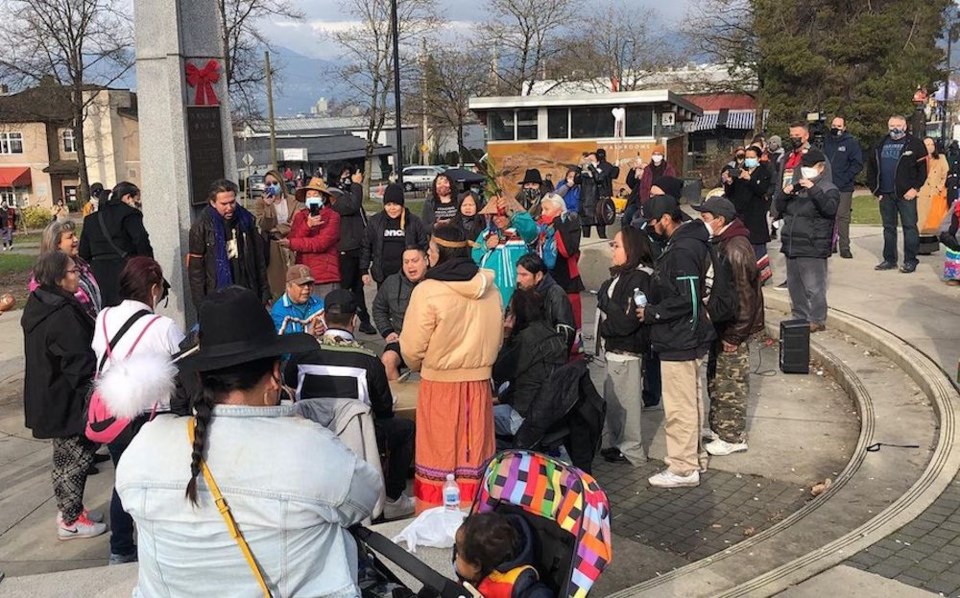Dozens of people attended a demonstration in East Vancouver today to show support for all Indigenous students across Canada who are shamed or barred for wearing traditional regalia to school ceremonies.
Indigenous women and families from across the Lower Mainland gathered at Grandview Park around noon to show support for all students who are told they can't wear traditional regalia at school.
The Canada-wide movement was sparked after a young Indigenous student was shamed by an educational assistant in her Grade 5 class for wearing her ribbon skirt to the school’s Formal Day.
The brightly patterned handmade skirts adorned with bands of ribbon are worn by Indigenous women during ceremonies and as an expression of cultural pride.
The young student, Isabella Kulak, lives in the Town of Kamsack, Saskatchewan, and was told her outfit "didn't match and wasn't formal."
However, wearing ribbon skirts has become a movement.
"We will no longer accept a residential school world.”
Ribbon skirts and shirts have become a popular clothing item for ceremonial and cultural events, weddings and everyday wear, as a show of Indigenous pride and as a show of support for Missing and Murdered Indigenous Women, Men and also for the rainbow colours of the LGBTQ community.
"We wear our ribbon skirts and shirts, in solidarity with Bella, her family, and all Indigenous students who have been told they cannot wear cultural regalia, or wear their hair in braids. The ignorance must stop," said Kat Norris, Coast Salish, a community activist with the Indigenous Action Movement.
"We will no longer accept a residential school world.”
Today's rally featured ceremonial drumming and speakers, and it called for an Annual Ribbon Skirt and Shirt Day.
Indigenous Action Movement
Indigenous Action Movement organizes events, forums and rallies, to show support and to stand up to injustices, to rally the people together to take a stand against racism.
The Movement includes speaking engagements at schools, post-secondary institutions, community organizations, and speaks to the true history of Indigenous people, and the impacts of colonization, reservation and residential schools.


